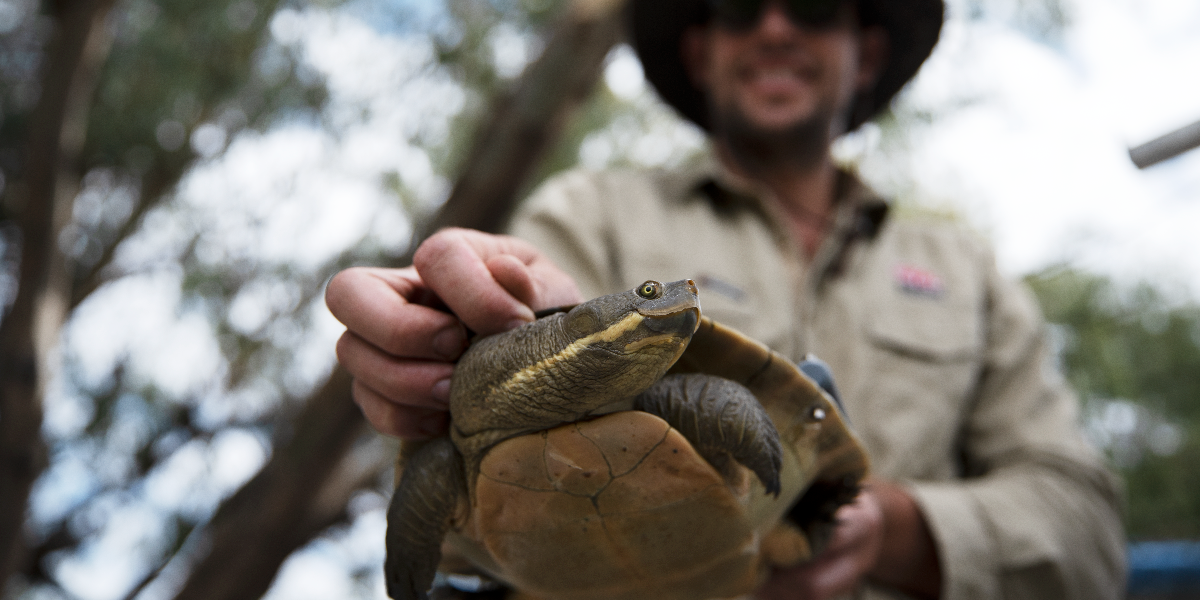The NSW Government is taking a deep dive into aquatic life across the state – everything from turtles and dragonflies to frogs, plants and endangered fish – to improve the way we manage our waterways for the next generations, and our own University of New England is helping them do it.
Minister for Water Rose Jackson said the Department of Planning and Environment’s Water Science Team have been busy uncovering the secret lives of the creatures who live in our rivers, creeks, streams, lakes, floodplains, wetlands, estuaries, tidal pools and reservoirs to give the NSW Government the tools it needs to make robust water management decisions that will improve environmental outcomes.
“This work includes a partnership with the University of New England which has tagged and tracked a selection of Murray River and Broad-Shelled turtles through the Barwon-Darling and Gwydir Rivers to examine how they’re impacted by different flows,” she said.
“We are also doing a separate study using high-tech baited remote underwater video (BRUV) cameras, an Australian first, to get a clearer headcount of endangered species such as the Manning River and Bell’s turtles.”
This information helps to shed light on river health and assists with forming detailed information for water management decisions including water sharing plans.
Chief Knowledge Officer from the Department of Planning and Environment’s Water Group, Mitchell Isaacs said environmental DNA (eDNA) is a key pillar of the research because even a small sample of water can reveal a surprising amount of information, including what creatures are living in and around the catchments or drinking from those sources at different stages of life.
“Next month we’ll head out and do some more fieldwork on the endangered giant dragonfly, helping us to understand this fascinating insect’s water needs in critical upland swamp areas such as in the Blue Mountains where they make burrows,” Mr Isaacs said.
“Giant dragonflies are usually only visible from November to January but we’re developing a never-before-used method through eDNA to monitor this rare species all year round and boost our understanding of their presence.
“We’re also now examining the final dataset from our FrogID partnership with the Australian Museum which uses an intuitive smartphone app allowing anyone to record frog sounds to identify their location, type, habitat and other details.
“Of the 32,000 croaks and ribbits recorded on the app from 111 species across the country in the past 12 months, we’ll be focusing on the nearly 13,000 that relate to 16 varieties of stream frogs that are important for water management decisions in NSW because they rely on streamflow to breed.”
To learn more about the NSW Government’s work in this space, please visit: https://water.dpie.nsw.gov.au/science-data-and-modelling/surface-water
Like what you’re reading? Support The New England Times by making a small donation today and help us keep delivering local news paywall-free. Donate now

